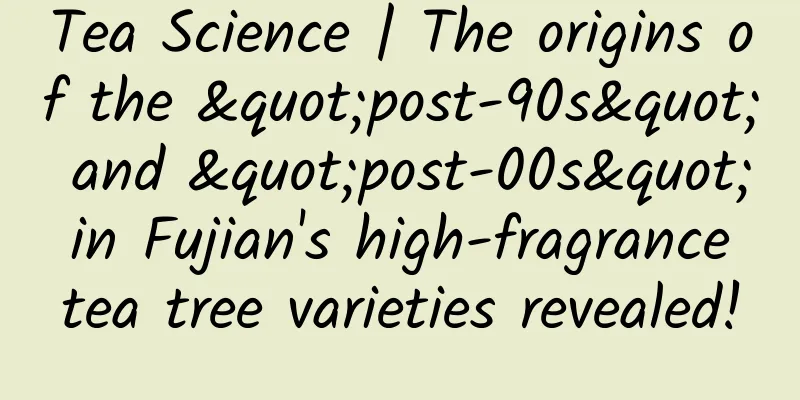What kind of Polygonum multiflorum is good?

|
Polygonum multiflorum is a traditional Chinese medicinal material. Everyone knows that it has the effect of blackening hair. In fact, Polygonum multiflorum has many other effects that we don’t know about. When we buy it ourselves, how should we choose it? Which kind of Polygonum multiflorum is good? The following methods can give you some specific understanding. It can let you know how to choose Polygonum multiflorum, let’s take a look. Polygonum multiflorum: For internal use: decoction, 10-20g, preferably those that are heavy, solid and powdery. Go to a Chinese medicine store and buy the already sliced ones. There are two types of clinical applications: raw Polygonum multiflorum and processed Polygonum multiflorum. Raw Polygonum multiflorum can detoxify, eliminate carbuncle, moisten the intestines and promote bowel movements. It is mainly used to treat scrofula, carbuncle, urticaria, itching, and dry intestine and constipation. Processed Polygonum multiflorum can nourish the liver and kidneys, improve essence and blood, blacken hair, and strengthen tendons and bones. It is mainly used to treat blood deficiency, chlorosis, dizziness, tinnitus, premature graying of hair, soreness of waist and knees, numbness of limbs, metrorrhagia, leukorrhea, and physical weakness due to long-term malaria. Modern Chinese medicine is often used in clinical practice to treat hyperlipidemia. Raw and processed Polygonum multiflorum have the same nature and flavor, but different effects and indications. Experiments have shown that their components, effects and toxicity are different. After being processed, the bound anthraquinone contained in raw Polygonum multiflorum can be converted into free type, so raw Polygonum multiflorum has a mild laxative effect while processed Polygonum multiflorum has no effect; raw Polygonum multiflorum has obvious toxicity while processed Polygonum multiflorum has very little toxicity. There are three types of Shouwu in the world, red, yellow and white, based on their colors. The three colors have different pharmacological effects. Although they all have the function of blackening hair, their focuses are different. The red one nourishes the blood and kidneys, the yellow one focuses on nourishing the stomach, and the white Shouwu focuses on nourishing the spleen. In fact, the white Shouwu is not in the same family as Shouwu, but everyone calls it that, and we are used to it. After reading this, do you understand more about the effects of Polygonum multiflorum? There is more to Chinese medicine than this. The profoundness of Chinese culture is something we can never learn in our lifetime. So now do you know what kind of Polygonum multiflorum is good? I hope you can choose the best one. |
<<: What diseases can He Shou Wu cure?
>>: What are the effects of wormwood foot bath powder
Recommend
Precautions for taking motherwort if menstruation does not come
Everyone thinks that motherwort has no side effec...
How creative is GPT-4? The divergent thinking that is unique to intelligent creatures has surpassed that of humans!
Divergent thinking is considered to be the core i...
Xishi Tongue: A Millennium Journey from a Beauty Legend to a Delicacy
The sashimi belongs to the phylum Mollusca, class...
The efficacy and function of Magnolia officinalis
Since Chinese medicine has fewer side effects, mo...
What are the benefits of drinking honeysuckle tea regularly?
Honeysuckle is a plant of the Asteraceae family. ...
Doping can turn athletes into super soldiers? Why is it so powerful?
How hard do athletes fight to win Olympic gold me...
Well-known actor fined 106 million yuan! What is tax evasion? Will you go to jail?
Experts in this article: Mao Junying, tax lawyer ...
Can eating snacks help you lose weight? The premise is that you have to do these 4 things!
Snacks include not only fruits, nuts and potato c...
Can mugwort water cure eczema?
Boiling water with mugwort actually has certain m...
The efficacy and function of Melaleuca alternifolia
Traditional Chinese medicine has a history of tho...
The "ginseng" in the desert, the "white ginseng" that was praised in the Han Dynasty, can actually cope with sandstorms?
Cistanche deserticola, also known as Cistanche de...
The efficacy and function of the original silkworm moth
For many Chinese people, traditional Chinese medi...
Hangzhou Asian Games successfully concluded! What kind of black technology is contained in the world's first "CNC lawn"?
The 19th Asian Games came to a successful conclus...
What are the skin sunburn warnings? Come and get your sun-protective skin "shield"
It is undoubtedly a wonderful thing to enjoy a ha...
The efficacy and function of the bristlecone
The bristlecone is a traditional Chinese medicine...









